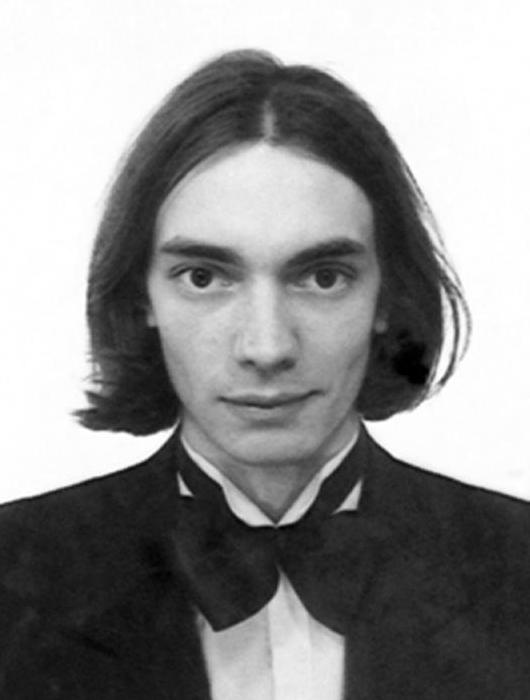What would you think if the nice café latte in your cup suddenly separated itself out into one half containing just milk and the other containing just coffee? Probably that you, or the world, have just gone crazy. There is, perhaps, a theoretical chance that after stirring the coffee all the swirling atoms in your cup just happen to find themselves in the right place for this to occur, but this chance is astronomically small.

Cédric Villani, Institut Henri Poincaré
Fields medallist 2010.
The fact that such spontaneous separation never occurs in practice is an illustration of a deep physical law: it says that the entropy of a system, a measure of its complexity, almost always increases as time passes. When you first pour the milk into your coffee, for a split second milk and coffee will be neatly separated, but soon the milk disperses. The mixture of milk and coffee becomes more and more complex, until it reaches an equilibrium when both are completely mixed up and complexity is at its peak.
In the late 19th century the physicist Ludwig Boltzmann studied this phenomenon, looking at what happens when a gas is released into a room from a bottle. He came up with an equation describing the evolution of this process — the change over time — in terms of how individual atoms collide and other forces acting on the gas. His calculations showed that indeed entropy doesn't decrease. The atoms of gas start out in an ordered state — all sitting in the bottle — and end up in a state of maximum complexity, dispersed throughout the room.
Intriguingly, this result meant that there is what physicists call an arrow of time, something that isn't inherent in classical Newtonian physics. If someone showed you a movie of a billiard ball rolling across the table, then you wouldn't be able to tell if the movie was being played forwards or backwards: it's just as likely that the ball rolls one way as it is to roll in the opposite direction. If, however, someone showed you a movie of a coloured gas dispersed in a room suddenly entering a bottle, you'd know that something's wrong. The movie is being played backwards. Since the interaction of individual atoms was described in terms of Newtonian laws (which don't have a preferred direction of time), this emergence of an arrow of time created some headache for physicists. Debate on the arrow of time issue continues to this day. As the mathematician John von Neumann once put it, "nobody knows what entropy really is, so in a debate you will always have the advantage".
Villani, however, does understand was entropy is. One question that has until recently remained open was how fast the entropy of a system increases. Cédric Villani received his Fields Medal for developing rigorous mathematical techniques that provide an answer. They show that while entropy never decreases, it sometimes increases faster and sometimes slower. Based on this work, Villani developed a general theory, hypercoercivity, which applies to a broad set of situations.
Villani also used his understanding of entropy to explain a phenomenon that had puzzled physicists for 60 years. Back in the 1940s, the Soviet physicist Lev Davidovich Landau claimed that plasma, a form of matter similar to gas, spreads and reaches its equilibrium state without increasing its entropy. Landau argued that unlike gas, whose approach to equilibrium is driven by particle collisions (which also lead to a loss of order), plasma reaches equilibrium through a decay in its electric field. Landau made some progress on proving his claim, but despite hard work by many physicists over 60 years, it wasn't until Villani's arrival on the scene that Landau was proved right.
All this might sound somewhat esoteric, but Villani's deep understanding of entropy has direct consequences for real-life problems. In the 18th century the French mathematician Gaspard Monge started to think about how to transport goods to various places in an efficient way. For example, you might want to distribute a bunch of letters sitting in a post office to the various addresses in a way that minimises transport cost. Villani and his colleague Felix Otto made a crucial connection between this problem and gas diffusion, by drawing the following analogy: loosely speaking, the initial state (all letters in the post office) corresponds to the ordered state of gas sitting in a bottle, while the end state (letters delivered) corresponds to a state where the gas has dispersed. To any configuration of dispersed gas particles you can assign a cost by seeing how far the particles had to travel from the original ordered state. Using this analogy and their understanding of entropy, Villani and Otto made important contributions to optimal transport theory.
So next time you have a cup of milky coffee or receive a letter, stop to think that a deep understanding of either, or even better a combination of both, could have earned you a Fields medal.
You can find out more about Villani's work in this excellent description on the ICM website, on which this blog post was based. To find out more about the Boltzmann equation and optimal transport problems, read the Plus article Universal Pictures.